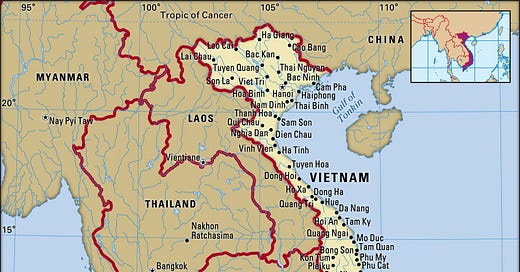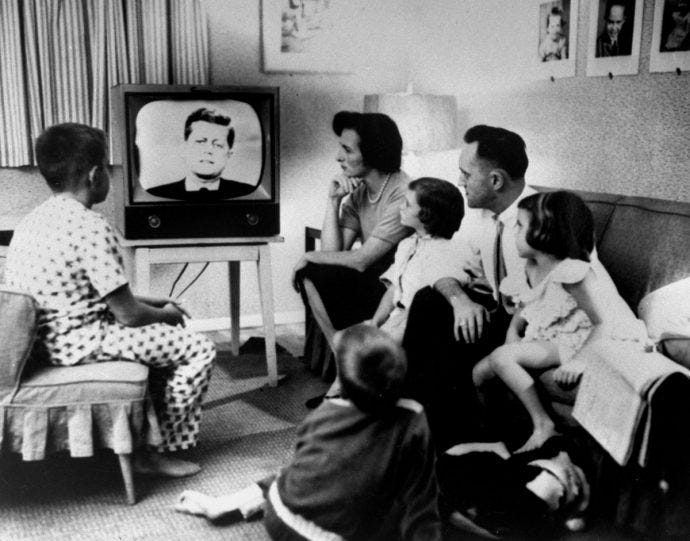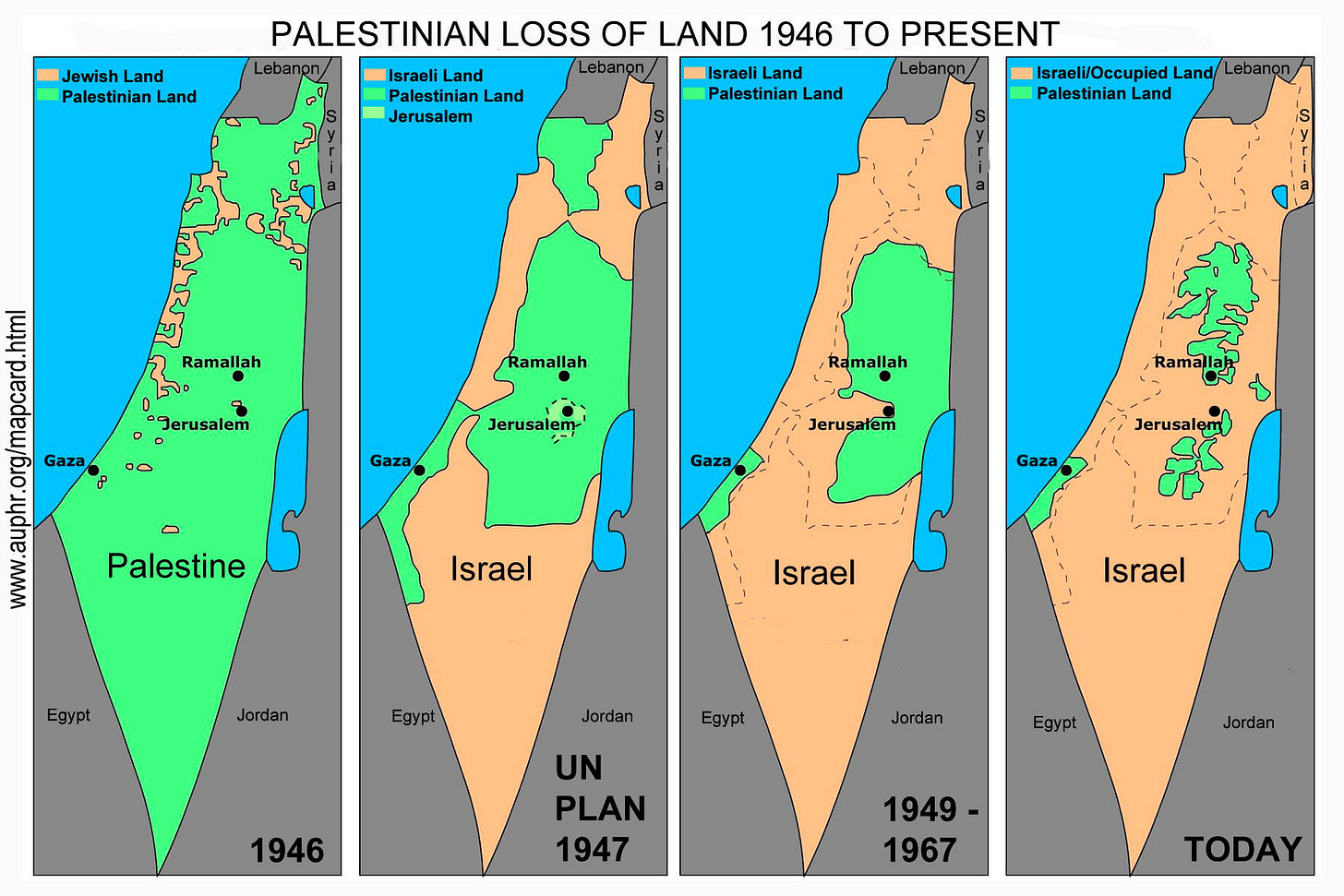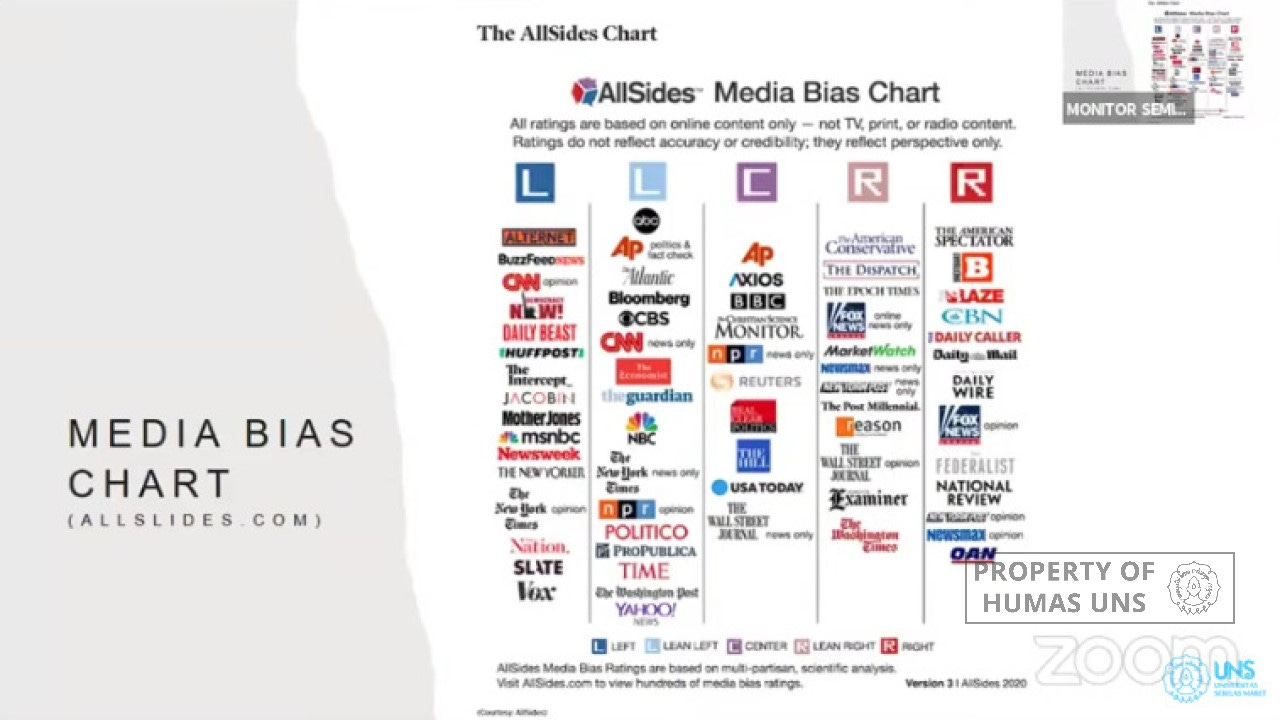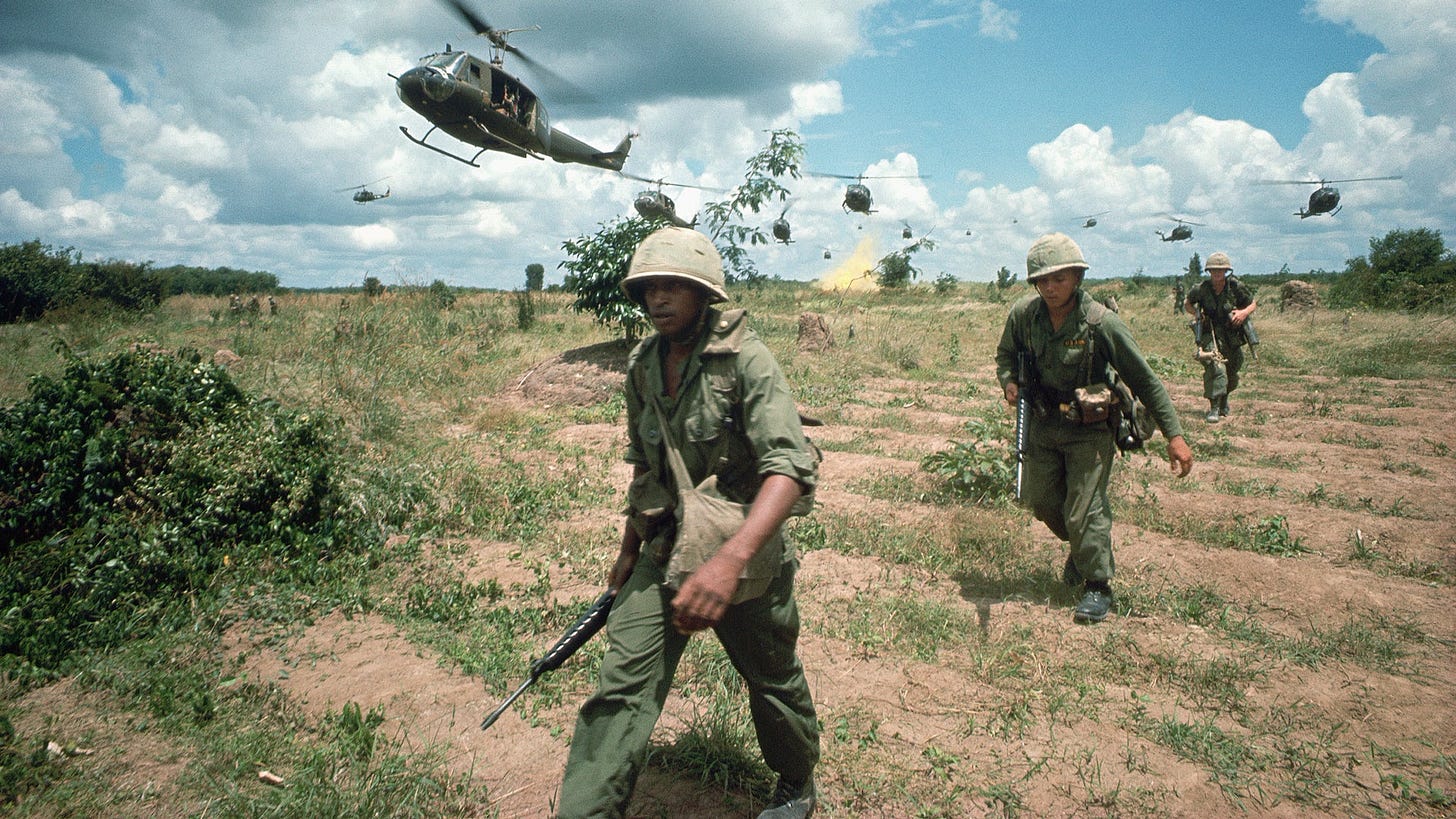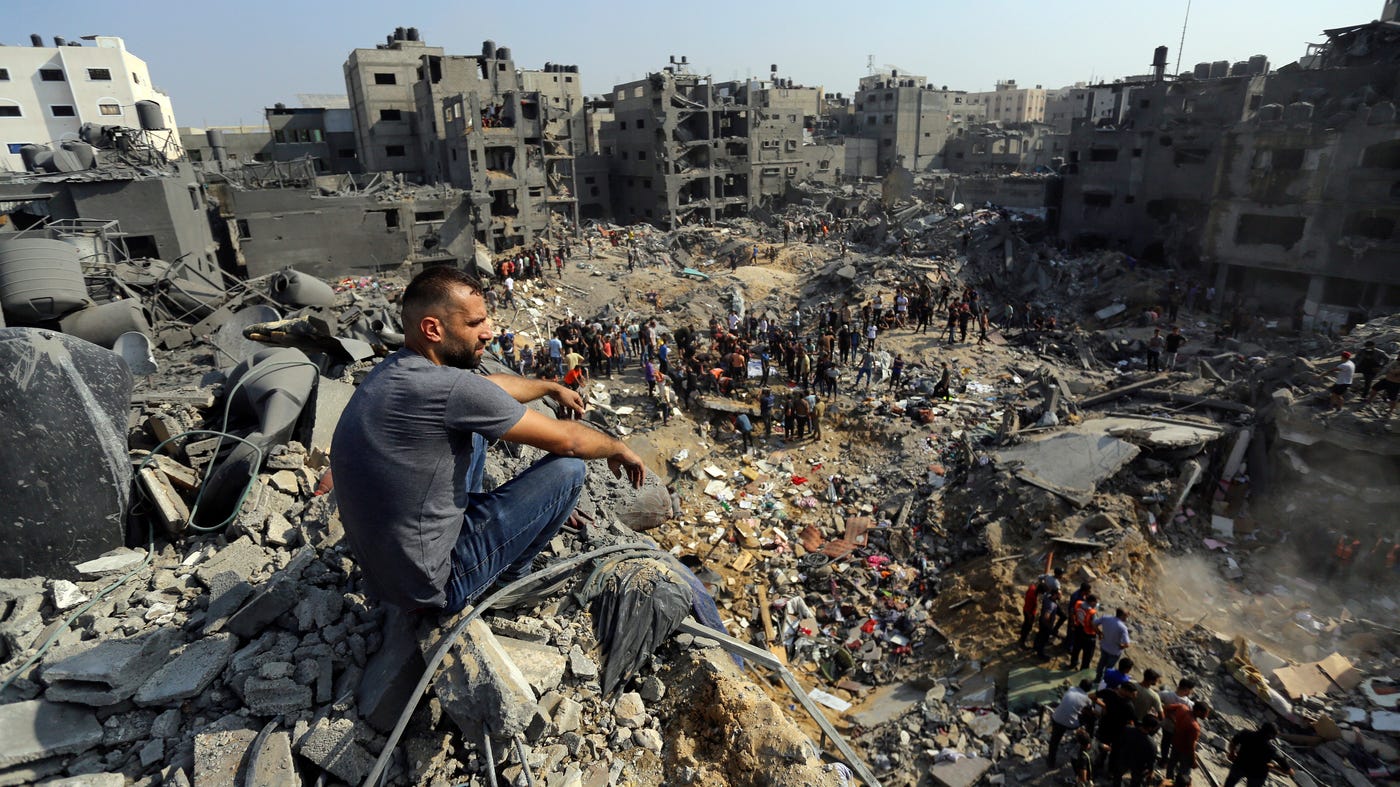Vietnam. As the Encyclopedia Britannica noted:
Vietnam became a subject of large-scale news coverage in the United States only after substantial numbers of U.S. combat troops had been committed to the war in the spring of 1965. Prior to that time, the number of American newsmen in Indochina had been small—fewer than two dozen even as late as 1964. By 1968, at the height of the war, there were about 600 accredited journalists of all nationalities in Vietnam, reporting for U.S. wire services, radio and television networks, and the major newspaper chains and news magazines.
But did they provide real news? Did they have any experience with Vietnam and its history?
While in Stuttgart in the late 1970s, I read the introductory volume of Peter Braestrup’s book The Big Story. His analysis of American news media’s reportage was damning. The so-called journalists generally had little or no experience with Southeast Asai, Vietnam, or war reporting. Moreover, few actually went in search of a story, particularly one which could put the U.S. invasion of Vietnam in perspective. Instead, for the most part, the “journalists” stayed in Saigon and depended on handouts and briefings from the Joint U.S. Public Affairs Office.
Journalism in Action stated that, until the 1960s, American media supported the war, despite its costs and casualties. (John F. Kennedy helped sustain his “constituents’’ views that it was a conflict worth fighting.) The Encyclopedia commented that Kennedy “transformed the policy of “limited-risk gamble” that he had inherited into a policy of “broad commitment” of containing Communism, America’s favorite enemy then (and now).
Two events changed the “first television war”.
One was the Tet offensive of late January 1968. As the U.S. State Department’s Office of the Historian acknowledged, North Vietnamese and communist Viet Cong forces launched a coordinated attack against a number of targets in South Vietnam. The U.S. and South Vietnamese militaries sustained heavy losses before finally repelling the communist assault. The Tet Offensive played an important role in weakening U.S. public support for the war in Vietnam.
The second event was then-president Lyndon Johnson’s raiding of the “privileged sanctuaries”, i.e., college campuses. In 1965, the Army was running out of cannon fodder. The war was escalating and Johnson’s Draft Board began conscripting an average of about 30,000 men a month. And not everyone in college had grades sufficient to keep them out of Vietnam’s jungles. Until then, lower classes, the “rednecks” (Caucasians who labored at unskilled jobs in the sun), the Negroes (who were generally not college students), and those who had only a high school education and who came from poor or working-class families went to Southeast Asia. When the president started drafting the children of middle-class and upper-class families, opposition to the war exploded. “Not my boy! Why not let the underprivileged die for their country?” Suddenly, it just wasn’t badly photographed, jerky TV images shown on the 6 p.m. news. Suddenly, it was graphic images of what could happen to their children.
THEN, it was Walter Cronkite, “The Most Trusted Man in America” who shifted his reporting in 1968. In an editorial, he said, on the air, “For it seems now more certain than ever that the bloody experience of Vietnam is to end in a stalemate,” adding, “that the only rational way out then will be to negotiate, not as victors, but as an honorable people who lived up to their pledge to defend democracy, and did the best they could.”
There you have it. War is fine, especially against the godless Communists—as long as someone else’s kid does the dying. And the media doesn’t report the news, it manufactures it, according to what its executives believe is most beneficial to their interests.
Palestine.
The Intercept, an online news outlet, said it all in January 2024
The New York Times, Washington Post, and Los Angeles Times’s coverage of Israel’s war on Gaza showed a consistent bias against Palestinians, according to an Intercept analysis of major media coverage…
The print media outlets, which play an influential role in shaping U.S. views of the Israeli–Palestinian conflict, paid little attention to the unprecedented impact of Israel’s siege and bombing campaign on both children and journalists in the Gaza Strip…
Major U.S. newspapers disproportionately emphasized Israeli deaths in the conflict; used emotive language to describe the killings of Israelis, but not Palestinians; and offered lopsided coverage of antisemitic acts in the U.S., while largely ignoring anti-Muslim racism in the wake of October 7. (2024).
The Intercept provided four key points:
1. Disproportionate Deaths. “Israelis’” were mentioned far more often as Palestinian ones. As the Arab death toll mounted, revelations about their demise slowed.
2. “Israelis” were slaughtered, not Palestinians. “Highly emotive terms for the killing of civilians like “slaughter,” “massacre,” and “horrific” were reserved almost exclusively for Israelis who were killed by Palestinians, rather than the other way around.”
3. Children. “Only two headlines out of over 1,100 news articles in the study mention the word “children” related to Gazan children…Despite Israel’s war on Gaza being perhaps the deadliest war for children — almost entirely Palestinian — in modern history, there is scant mention of the word “children” and related terms in the headlines of articles surveyed by The Intercept.” “The death toll of Palestinian children is about 10,000.
“By way of comparison, more Palestinian children died in the first week of the Gaza bombing than during the first year of Russia’s invasion of Ukraine, yet the New York Times, Washington Post, and Los Angeles Times ran multiple personal, sympathetic stories highlighting the plight of children during the first six weeks of the Ukraine war.”
4. Coverage of Hate in the U.S.” Overall, there was a disproportionate focus on racism toward Jewish people, versus racism targeting Muslims, Arabs, or those perceived as such.”
Omitted from the Intercept’s analysis was that nearly all of the reporting came from within “Israel” and not from Occupied Palestine. The media also played down the number of journalists the Zionist Entity murdered. As stated by the Committee to Protect Journalists, as of January 2025, at least 167 journalists and media workers died as the result of Zionist actions. Reporters from Al Maydeen, the Lebanese news source, lost their lives as the result of Israeli strikes. Some were blown up while sleeping, others, wearing helmets and flak jackets clearly labeled “journalist” in English and Arabic were shot down.
Then there was the trope: “Israel” has the right to defend itself. That was all through the media and the talking heads on television “news” programs. Little, if any background, was provided about how “Israel” is an illegitimate and terrorist entity.
Fortunately, there were alternative news sources not under the control of the Legacy Media. Many, especially those under 30, got their information from various Internet channels.
COMMENT. What more can be said? How about a quote from a 15 year old high school student who read Ilan Pappė’s new book, A Short History of the Israel-Palestine Conflict?
Yeah, I just assumed the conflict started in 1967 instead of actually starting when the first Zionist settlers came to Ottoman controlled Palestine. I feel like more people would understand the issues with Israel if they knew that.
Or, maybe pictures.
Nice, innocuous Vietnam picture.
Here’s Palestine After Zionist Attacks. Did You See This on TV?
Lebanon After the Palestinian Truce. Where Was This Broadcast?
J. Michael Springmann is an attorney, author, political commentator, and former diplomat, with postings to Germany, India, and Saudi Arabia. He previously authored, Visas for Al Qaeda: CIA Handouts That Rocked the World: An Insider’s View, recounting how the U.S. created and used Islamic Terrorism. Additionally, he penned Goodbye, Europe? Hello, Chaos? Merkel’s Migrant Bomb, an analysis of the alien wave sweeping the Continent. He currently practices law in the Washington D.C. Area. Internationally recognized as a knowledgeable pundit, he is a frequent commentator on Arab, Iranian, and Russian news programs.
Blacklisted by the US news media, he is also on the Ukraine’s “Enemies List”, having questioned, inter alia, that country’s refusal to honor the Minsk Accords and for stating that its government is Nazified.
